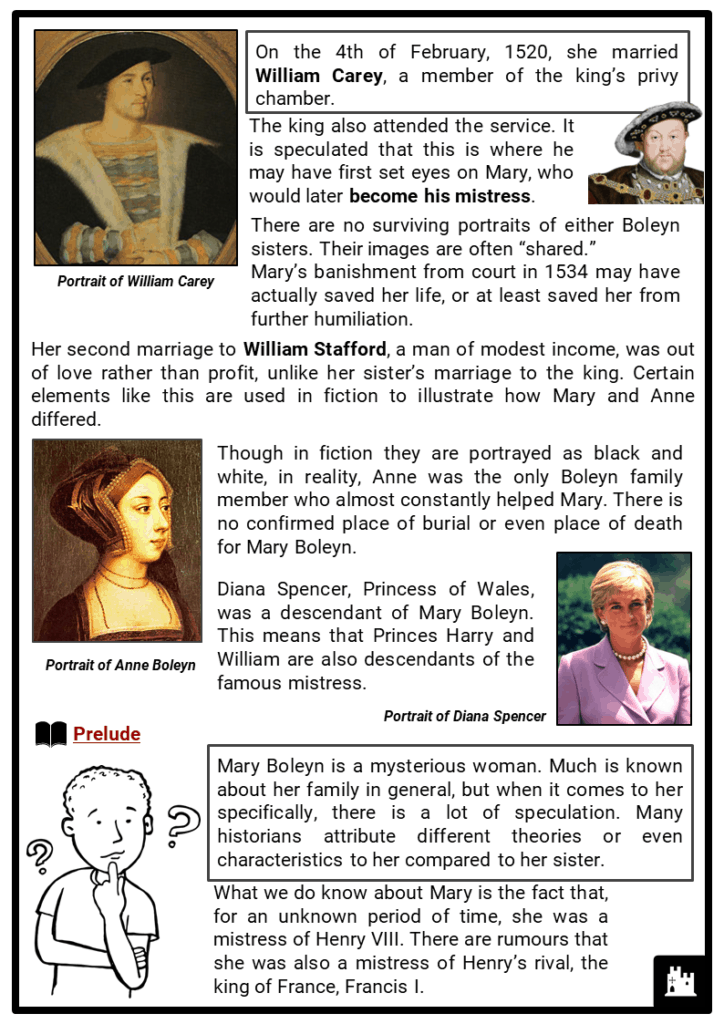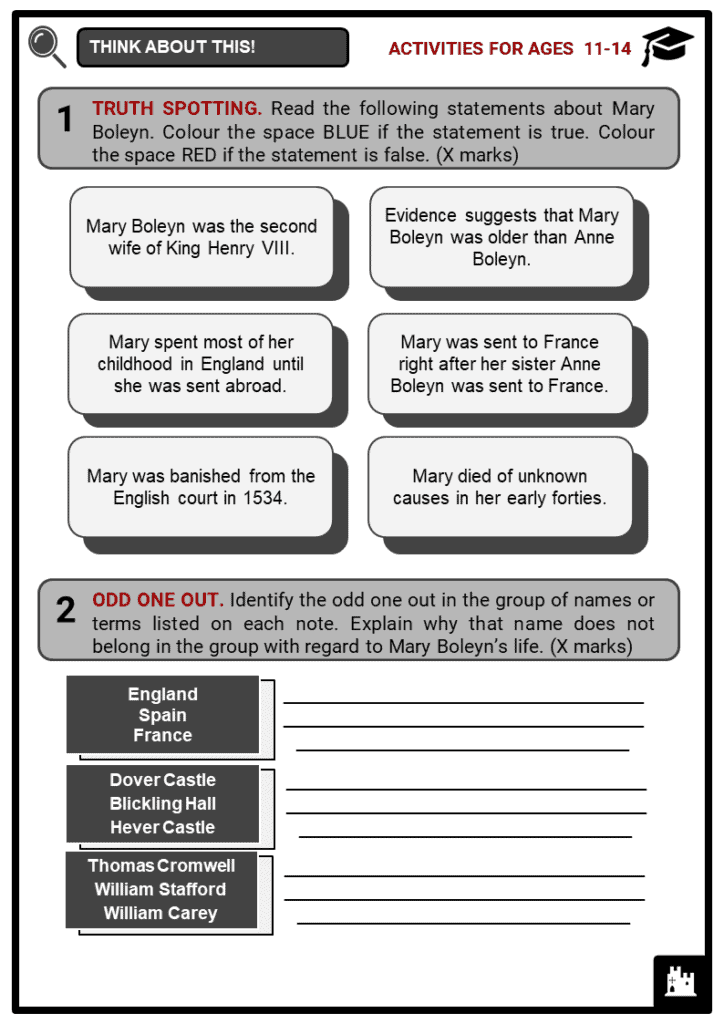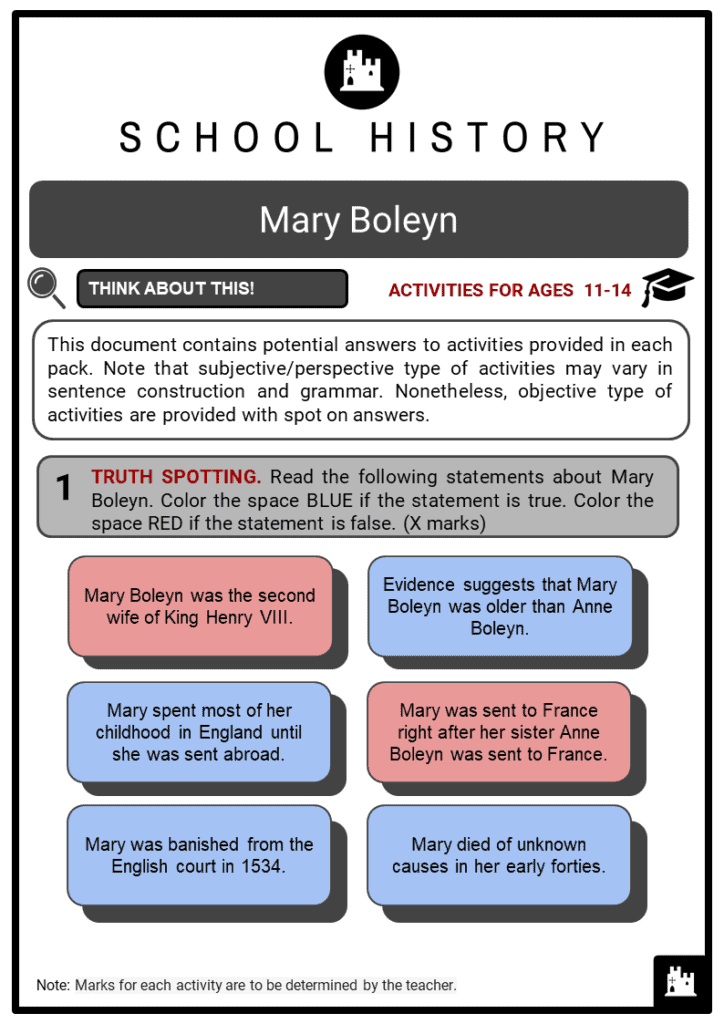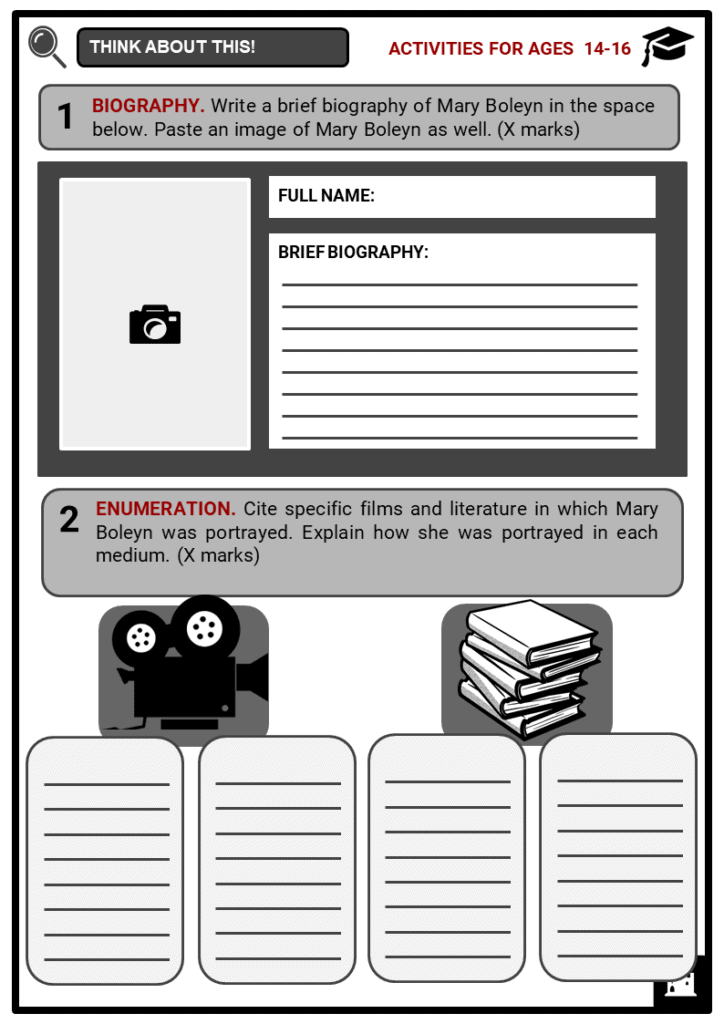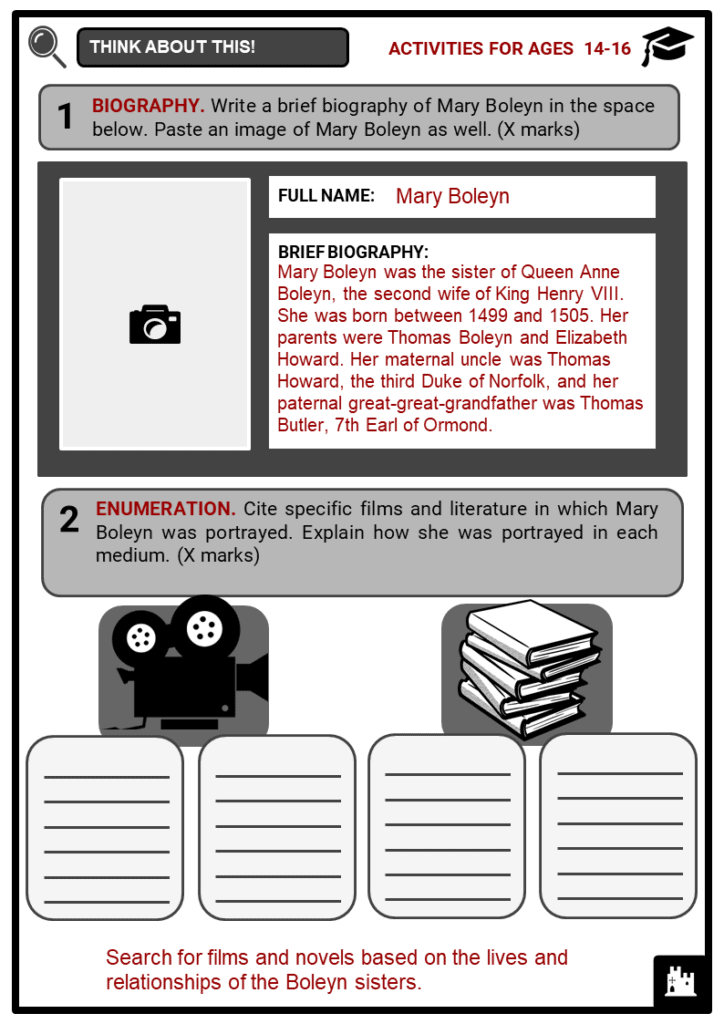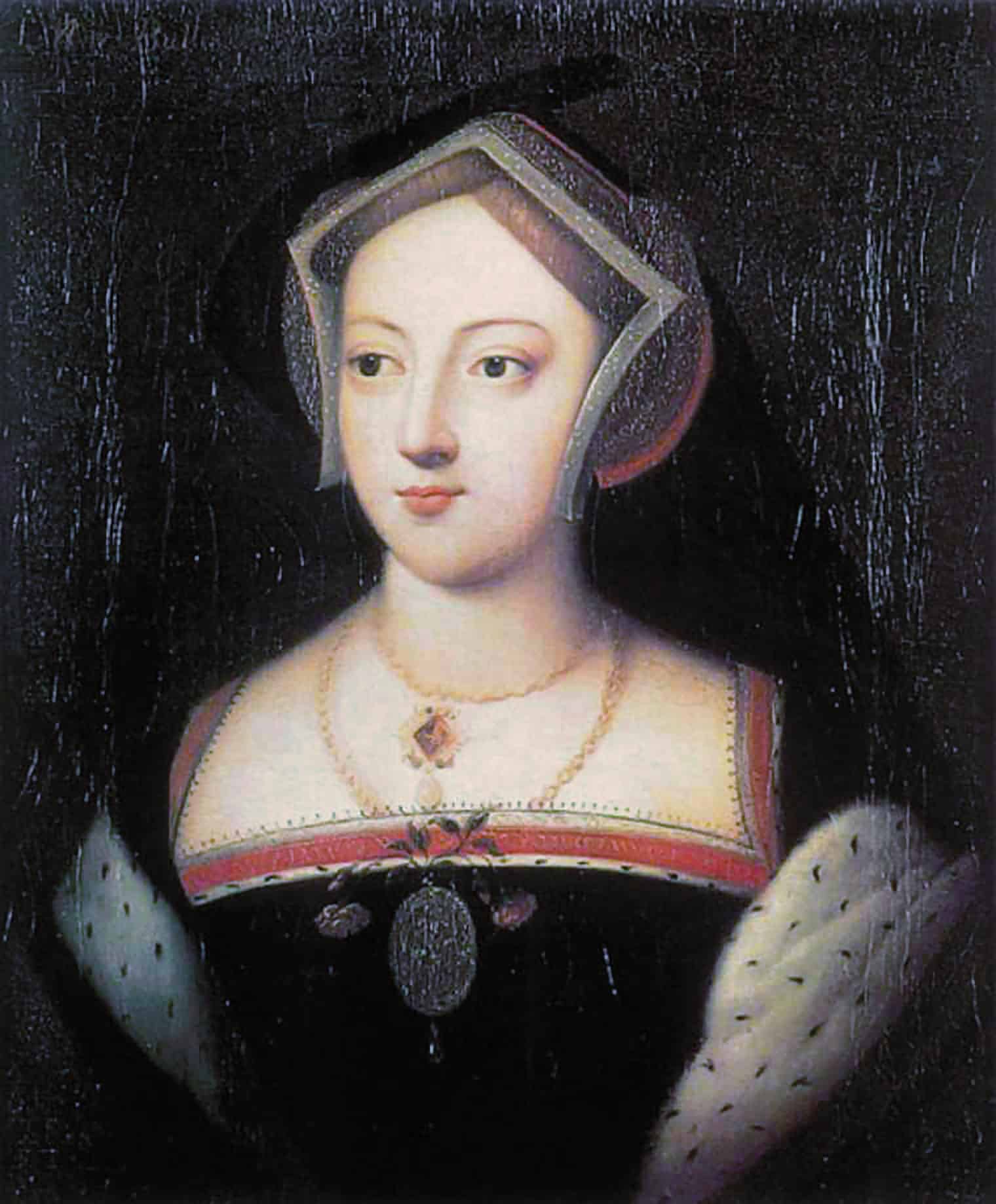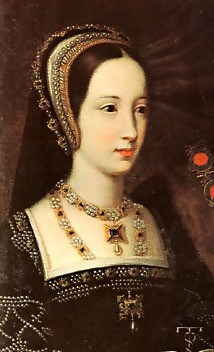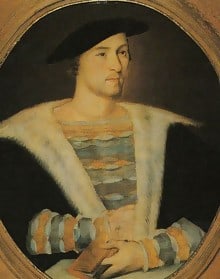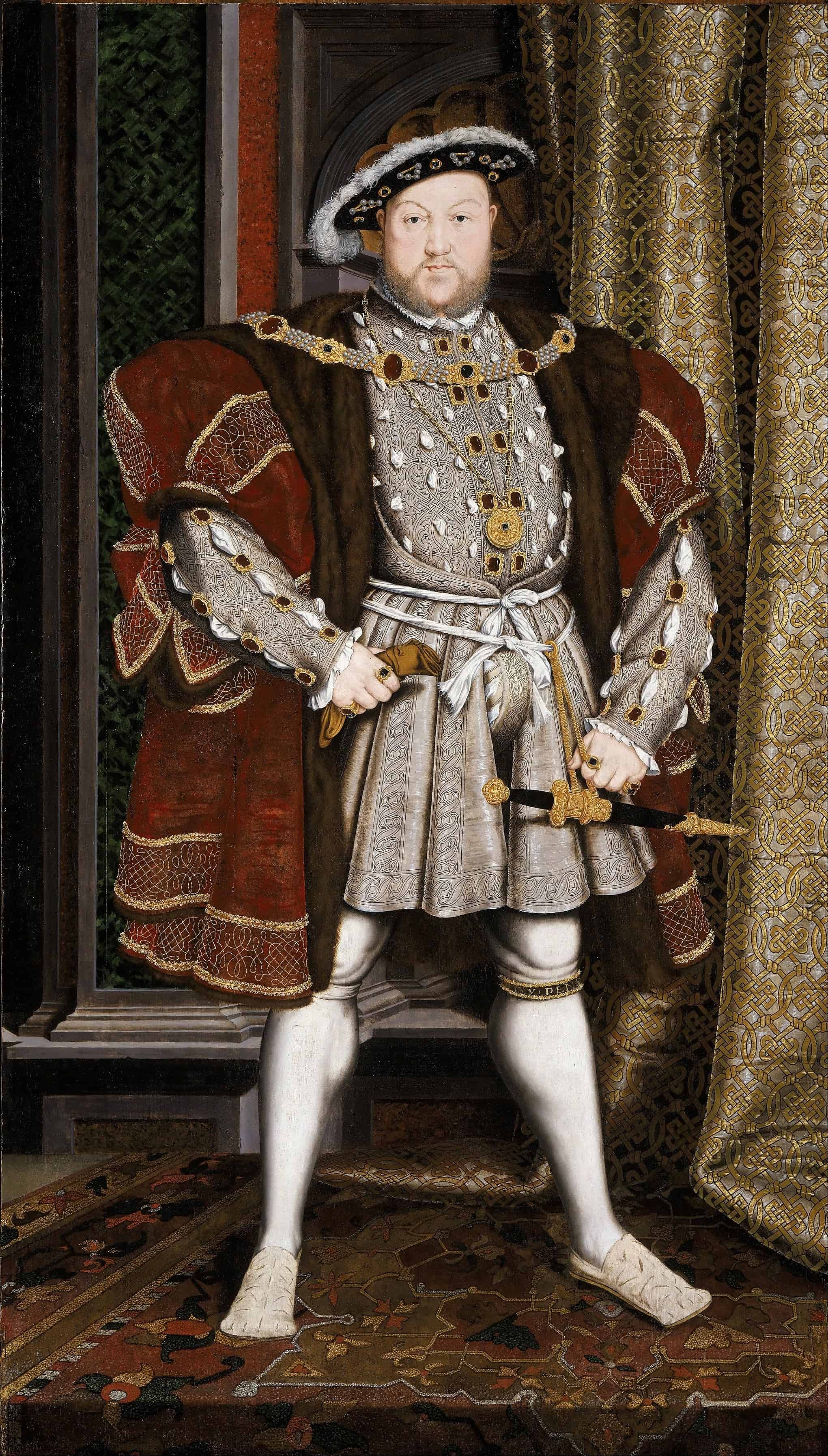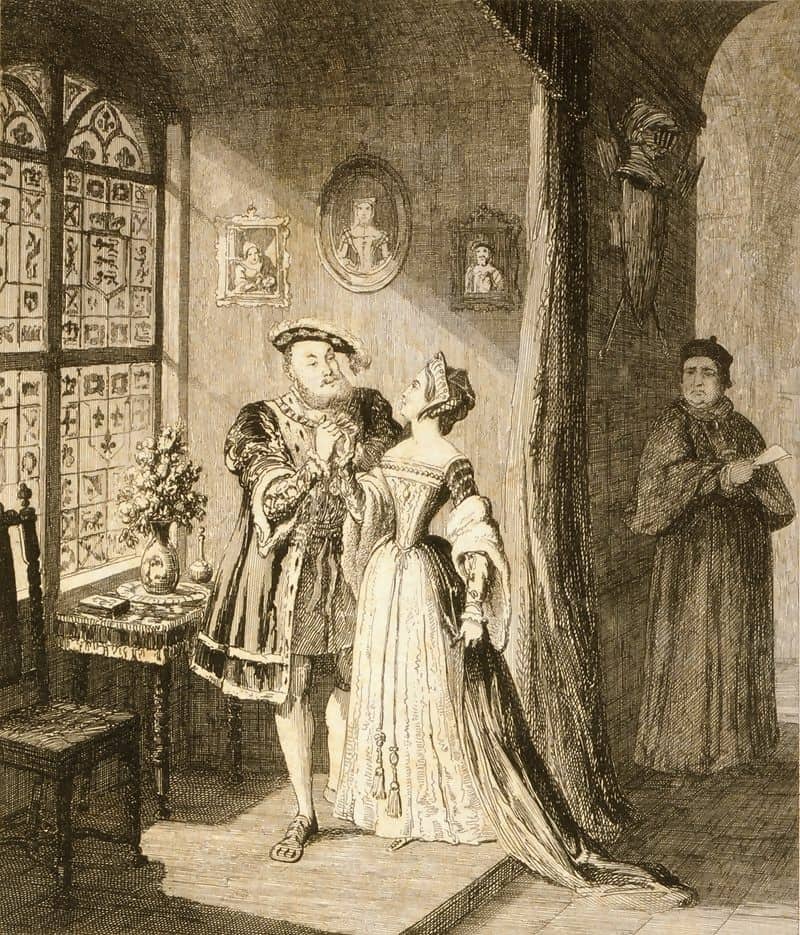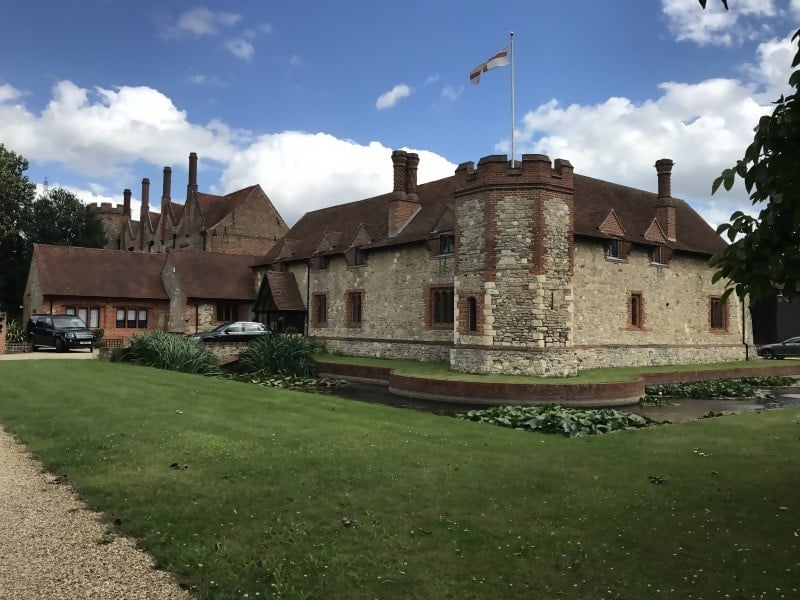Download Mary Boleyn Worksheets
Do you want to save dozens of hours in time? Get your evenings and weekends back? Be able to teach Mary Boleyn to your students?
Our worksheet bundle includes a fact file and printable worksheets and student activities. Perfect for both the classroom and homeschooling!
Summary
- Who was Mary Boleyn?
- Who was Mary Boleyn married to?
- How was Mary Boleyn connected to English royalty?
- What was the scandal for which Mary Boleyn is known?
Key Facts And Information
Let’s find out more about Mary Boleyn!
- Mary Boleyn was the sister of Queen Anne Boleyn, the second wife of King Henry VIII.
- She also had two brothers, George Boleyn and Thomas Henry, yet Henry died in childhood.
- She was born between 1499 and 1505. Her parents were Thomas Boleyn and Elizabeth Howard. Her maternal uncle was Thomas Howard the third Duke of Norfolk and her paternal great-great-grandfather was Thomas Butler, 7th Earl of Ormond.
- On the 4th of February, 1520, she married William Carey, a member of the king’s privy chamber.
- The king also attended the service. It is speculated that this is where he may have first set eyes on Mary, who would later become his mistress.
- There are no surviving portraits of either Boleyn sisters. Their images are often “shared.”
- Mary’s banishment from court in 1534 may have actually saved her life, or at least saved her from further humiliation.
- Her second marriage to William Stafford, a man of modest income, was out of love rather than profit, unlike her sister’s marriage to the king. Certain elements like this are used in fiction to illustrate how Mary and Anne differed.
- Though in fiction they are portrayed as black and white, in reality, Anne was the only Boleyn family member who almost constantly helped Mary. There is no confirmed place of burial or even place of death for Mary Boleyn.
- Diana Spencer, Princess of Wales, was a descendant of Mary Boleyn. This means that Princes Harry and William are also descendants of the famous mistress.
- Mary Boleyn is a mysterious woman. Much is known about her family in general, but when it comes to her specifically, there is a lot of speculation. Many historians attribute different theories or even characteristics to her compared to her sister.
- What we do know about Mary is the fact that, for an unknown period of time, she was a mistress of Henry VIII. There are rumours that she was also a mistress of Henry’s rival, the king of France, Francis I.
- She was married two times: In 1520 to William Carey, who died after the sweating sickness crisis, and then secretly to William Stafford in 1534. Stafford was considered beneath her station by the king and her sister.
- This secret marriage led to her banishment from the royal court, an action conducted both by her sister and the king. Her sister is the most well-known Boleyn family member. She married Henry VIII, the king of England, and turned him against the Catholic Church,
- Which led to her being considered one of the most influential Queen Consorts ever.
- Generally, in novels and in films, her sister Anne Boleyn is described as an ambitious woman who would do anything to become queen, while Mary Boleyn is portrayed as the antithesis to her. This, of course, is just a romanticised version of the historical figures, with only a few elements of the truth.
- The reality is that we knew very little about Mary compared to her other family members.
Mary Boleyn
- Regarded as the first child born to Thomas Boleyn and Elizabeth Howard, due to the fact that she was the first to get married, her birth is speculated to have been between 1499 and 1505.
- She spent much of her childhood at Blickling Hall in Norfolk, and then at Hever Castle in Kent.
- Historical fiction often portrays Mary as being more beautiful than her sister Anne, although there are no surviving portraits or written accounts to confirm how she or even her sister looked.
- Due to the lack of evidence, portraits of Anne and Mary share presumed images. An example is a 1525 miniature portrait by Lucas Horenbout.
- It was believed to portray Anne Boleyn for years until one scholar used the age and dress of the model to suggest she was, in fact, Mary.
- Mary’s father Thomas was an important member of Henry VIII’s court.
- He was very ambitious, cunning, smart and used his skills and wits to provide a very good education for his children.
- He used this for the benefit of both himself and his family, to gain footing in the court. Being a talented man, fluent in French, he quickly gained the title of ambassador and was sent on many missions representing England.
On the pathway to royalty
- It is suggested that during her stay at the French court, Mary Boleyn became the mistress of Francis I, the new French king.
- This idea is derived from a letter written by Rodolfo Pio, Bishop of Faenza in 1536, but it is full of inaccuracies. The letter was written twenty years after Mary was in France. It is most likely that Rodolfo’s letter was a fabricated lie in order to discredit Mary and her sister Anne.
- Though for five years her whereabouts remain a mystery, Mary returned to England on the 4th of February, 1520.
- She married William Carey, a member of the king’s privy chamber.
- Many important figures attended the ceremony, most notably the king himself who gave the couple a present. It is possible that this is where the king first set eyes on Mary. She became his mistress around 1522, or so many believe, but it is still widely unknown.
- Many consider the affair to have lasted three years, from 1522 to 1525. In this timeframe, Mary gave birth to a daughter named Catherine in 1524 and to a boy in 1526 named Henry.
- Due to the conception dates that coincide with the affair, it is speculated that Henry VIII was the father of the children. Yet Henry never acknowledged the children as he did in other cases, leaving the matter a mystery. On the 22nd of June, 1528, Mary’s husband William Carrey died of the sweating sickness. She was left a widow without any means of supporting herself. Her son became a ward for her sister Anne, who was at this time courted by Henry VIII.
- Historians presume that Mary returned with her daughter to Hever Castle for a time. This was a difficult time for Mary as even her father turned his back on her. It is concluded that the reason for this is due to the fact that she was no longer the king’s mistress, and therefore lost all means of advancement for her family.
- It is known that Henry VIII stepped in and asked her father to support her.
- The king also granted Mary an annuity of £100 a year which was previously given to her late husband William Carey.
- Her life between 1528 and 1534 once again becomes elusive, yet we know that in this period, her sister was given the title Marquis of Pembroke and then, in 1533.
- Anne married Henry VIII and became Queen Consort of England.
- During the New Year celebrations of 1532, Mary accompanied her sister and the king to France where they met Francis I.
- Records state that Mary was one of the ladies participating in a masquerade to entertain the French king in a banquet held on the 27th of October.
- Mary also appears in the records during her sister Anne’s coronation on the 1st of June, 1533.
Fall from grace
- In 1534, Mary Boleyn returned to court as a remarried woman and, more importantly, pregnant. This caused quite a scandal.
- Sometime in 1534, she secretly married William Stafford, a soldier at the garrison of Calais. Being the sister of the queen, marrying someone like William Stafford was considered beneath her station in life. To add further insult to her family, she did so without her sister or father’s permission.
- The union with William Stafford, a man who had a low income, and was a second son, thus reducing his chances of inheritance, was considered by many a love union, and a sign of Mary’s purity as opposed to that of her sister Anne. The family was outraged, and so they decided to banish her from the court, something that might actually have saved her life later on. She was also disowned by her family. Thus Mary’s financial circumstances became desperate.
- She was reduced to begging the king’s adviser Thomas Cromwell to speak to Henry and Anne on her behalf.
- Henry seemed indifferent to her plight. Mary’s father, her uncle the Duke of Norfolk, even her brother, all ignored her.
- In the end, her sister Anne sent Mary a golden cup and some money but still refused to reinstate her position at the court.
- The fate of the child she was pregnant with is unknown. Most likely she suffered a miscarriage.
- It is also unknown where she went after her banishment, yet it is logical to conclude that she went to her husband in Calais.
- What is known is that in 1539, her husband William Stafford was chosen as one of the members assigned to welcome Anne of Cleves, Henry VIII’s fourth wife, to Calais.
Aftermath
- On the 19th of May, 1536, Mary’s sister Anne was executed.
- She was found guilty of trumped-up charges of incest, adultery and treason.
- Her brother George was also executed as he was found guilty of incest and treason two days previously.
- They were both beheaded at Tower Hill.
- On the same day of the execution, Anne’s marriage to Henry VIII was annulled, most likely due to his previous affair with her sister Mary. Anne’s daughter Elizabeth was declared a bastard. It appears that Mary was never reunited with her parents who died in 1538 and 1539.
- Sometime in early 1540, Mary and her husband William returned to England where Mary received some of her father’s inheritance, including Rochford Hall, where she spent the rest of her life.
- Though she finally got her inheritance, she sadly passed away either on the 19th of July or the 30th of July, 1543. The exact date is not known, neither is her final resting place.
Image Source:
[1.] https://upload.wikimedia.org/wikipedia/commons/b/b0/Mary_Boleyn.jpg
[2.] https://upload.wikimedia.org/wikipedia/commons/e/e4/1496_Mary_Tudor.jpg
[3.] https://upload.wikimedia.org/wikipedia/commons/5/5b/William_Cary.jpg
[4.] https://upload.wikimedia.org/wikipedia/commons/0/07/Workshop_of_Hans_Holbein_the_Younger_-_Portrait_of_Henry_VIII_-_Google_Art_Project.jpg
[5.] https://en.wikipedia.org/wiki/Hever_Castle#/media/File:Hever_Castle_2014_06_20_1.jpg
[6.] https://en.wikipedia.org/wiki/Anne_Boleyn#/media/File:Henry's_reconciliation_with_Anne_Boleyn_cph.3g08965.jpg
[7.] https://en.wikipedia.org/wiki/Rochford_Hall#/media/File:Moat_at_Rochford_Hall,_Essex.jpg


